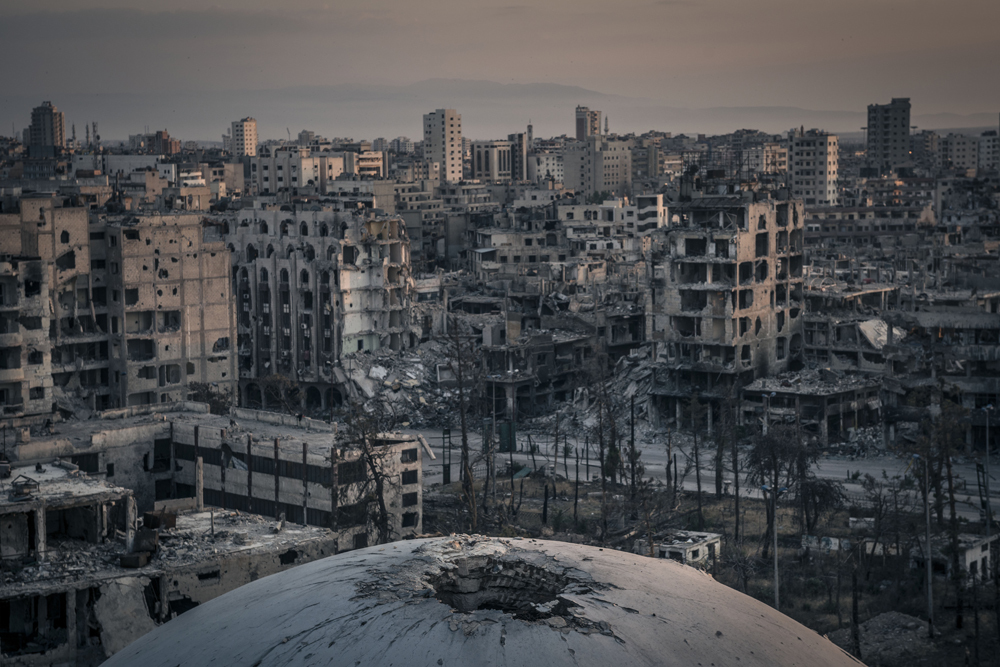
Homs, Syria's third largest city, was one of the early centers of revolt against President Bashar al-Assad. Protests began in the spring of 2012, and after security forces fired on demonstrators, some Homs residents were among the first Syrians to take up arms. Soon, insurgents, most of them locals, ruled the streets of the Old City of Homs, the core of the city. Government forces bombarded and eventually besieged the area. The mood inside turned gradually from exuberance to despair as the armed revolt turned into a stalemate and the government succeeded in shoring up control of the crucial corridor from Damascus through Homs to the coast. Meanwhile, inside the city, some civilians had managed to leave through tunnels. Insurgent groups were riven by rivalries. A war economy developed in which armed men on both sides of the siege lines profited from trading across them, as all the while more and more neighborhoods were destroyed. Pro-government neighborhoods suffered too, from insurgent snipers and suicide bombs. Homs became a city divided, with relatively normal life continuing on the government side, punctuated by violence, and an increasingly apocalyptic world inside the besieged Old City, where some people began making stews out of fruit pits and grass. In early 2014, the United Nations struck a deal to bring in humanitarian aid and began offering amnesty to fighters who left, although some were kept for months in detention by security forces. In May, insurgents agreed to leave the Old City in exchange for safe passage to an insurgent held area, handing control of the city center back to the government, which declared victory. But what remains in the Old City is one of the most arresting landscapes of urban destruction that the world has seen in recent years. Block after block, neighborhood after neighborhood, buildings are pancaked or riddled with holes. In areas where more homes are intact, families' belongings are scattered across streets. The government says it will rebuild, and some families are returning to damaged homes, but they lack money for reconstruction, and utilities have not yet been restored to many areas -- especially, residents say, the Sunni areas where support for the revolt was strongest. Homs now stands as a question mark: Even if the government wins, what does victory look like? Can the country be stitched back together again?



